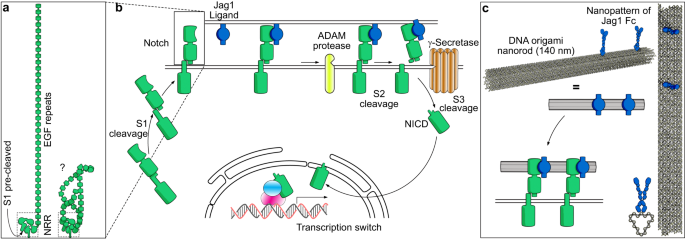2024-01-18 スイス連邦工科大学ローザンヌ校(EPFL)
◆ナノポアはピコモーラル濃度でペプチドを検出し、ディープラーニングアルゴリズムはそのPTMパターンに基づいて正確に分類します。この手法は、タンパク質修飾の理解を新たな次元に引き上げ、バイオマーカーの発見や診断にも応用できる可能性があります。将来的には、パーキンソン病などの早期診断に利用される携帯型診断デバイスの開発が期待されています。
<関連情報>
- https://actu.epfl.ch/news/nanopores-and-deep-learning-change-disease-diagnos/
- https://pubs.acs.org/doi/10.1021/acsnano.3c08623
バイオロジカル・ナノポアを用いたタンパク質の翻訳後修飾のディープラーニング支援による1分子検出 Deep Learning-Assisted Single-Molecule Detection of Protein Post-translational Modifications with a Biological Nanopore
Chan Cao, Pedro Magalhães, Lucien F. Krapp, Juan F. Bada Juarez, Simon Finn Mayer, Verena Rukes, Anass Chiki, Hilal A. Lashuel, and Matteo Dal Peraro
ACS Nano Published:December 19, 2023
DOI:https://doi.org/10.1021/acsnano.3c08623
Abstract

Protein post-translational modifications (PTMs) play a crucial role in countless biological processes, profoundly modulating protein properties on both spatial and temporal scales. Protein PTMs have also emerged as reliable biomarkers for several diseases. However, only a handful of techniques are available to accurately measure their levels, capture their complexity at a single molecule level, and characterize their multifaceted roles in health and disease. Nanopore sensing provides high sensitivity for the detection of low-abundance proteins, holding the potential to impact single-molecule proteomics and PTM detection, in particular. Here, we demonstrate the ability of a biological nanopore, the pore-forming toxin aerolysin, to detect and distinguish α-synuclein-derived peptides bearing single or multiple PTMs, namely, phosphorylation, nitration, and oxidation occurring at different positions and in various combinations. The characteristic current signatures of the α-synuclein peptide and its PTM variants could be confidently identified by using a deep learning model for signal processing. We further demonstrate that this framework can quantify α-synuclein peptides at picomolar concentrations and detect the C-terminal peptides generated by digestion of full-length α-synuclein. Collectively, our work highlights the advantage of using nanopores as a tool for simultaneous detection of multiple PTMs and facilitates their use in biomarker discovery and diagnostics.


